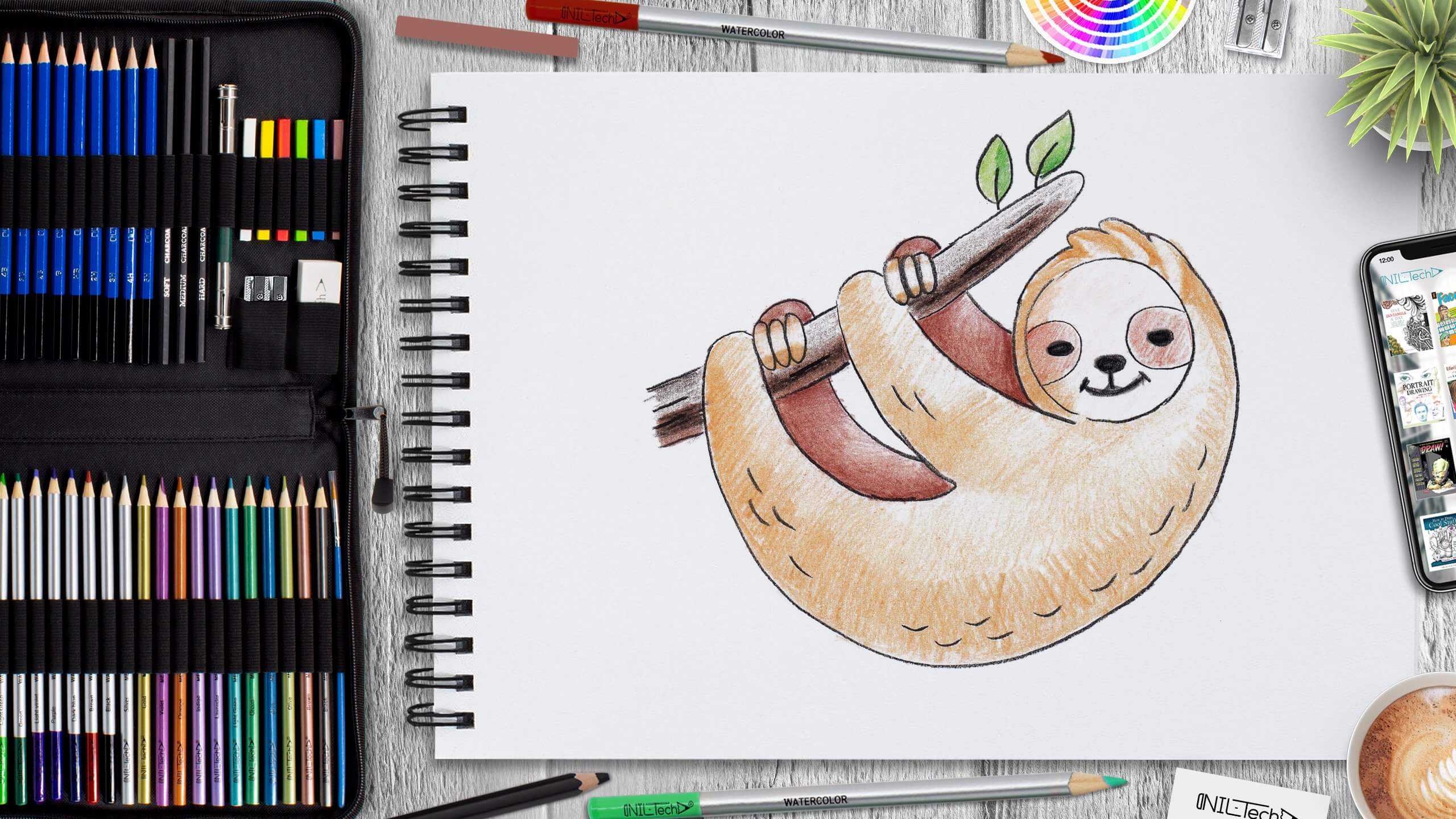
How to Draw a Sloth
Jan 06 , 2020

Hi everybody, and welcome to a new NIL-Tech drawing tutorial: "Sloth". Found in Central and South America, sloths call the tall trees their home, as their long claws make it hard for them to stroll on the ground. Sloths appear to be everyone's "spirit animal." They get to eat, sleep, and hang out in trees throughout the day, minding their business without care worldwide. Or at least that's how it looks. It turns out, there are a lot of for them to be so slow-moving - and laziness isn't one of them.
Here are some interesting facts about a Sloth:
1. It Takes Two. There are two sorts of sloth, two-toed and three-toed. However, this can get confusing as both types have three claws, or 'toes', on their back limbs. In reality, the 'two-toed' sloth should be called the 'two-fingered' sloth as the difference between them both can be found on their front limbs.
2. Natural camouflage. Sloths possess a symbiotic partnership with the algae that grows on their fur. While the sloth provides the algae with protection and water (as sloth hair is very absorbing), the algae give the sloth camouflage along with extra nutrients through their skin.
3. Hanging upside down. The impressive biology of a sloth allows it to spend 90% of its life hanging upside down. Researches show that this is possible because their organs are connected to their rib cage, which suggests they don't weigh down on the lungs. This implies that, unlike us, a sloth can hang upside down without any effect on its breathing.
4. Taking a look at You. Sloths have an additional vertebra at the base of their neck that permits them to turn their heads on a 270 ° axis. This enables them to get an almost 360 ° view of their surroundings, which proves to be a highly advantageous defensive device. This one-of-a-kind function makes sloths stand out from other animals whose bone structures do not enable this adaptability.
5. A Photo Smile. The facial structure of a sloth gives the appearance that it is continuously smiling - even if it is experiencing pain or stress. When sloths are used as a photo prop for selfies, travelers might accidentally confuse this feature for happiness or contentment.
Let's start drawing a Sloth step by step!
In this tutorial, we used the following supplies:
- 2B pencil
- 5B pencil
- HB pencil
- 4H pencil
- colored pencils
- Mechanical Pencil
- Kneaded Eraser
- White Vinyl Eraser
STEPBYSTEP10

Step 1. Draw the branch and contour of the sloth (pencil 4H).


Step 3. Draw the fingers, eyes, nose, and mouth (pencil 2B).

Step 4. Erase excess lines, draw the paws. Draw a branch, add leaves. Draw the details of the face (pencil 5B).

Step 5. Outline the contours, erase the excess lines (pencil 5B, eraser).

Step 6. Color the body with a beige pencil; the legs and branch with a brown pencil (colored pencils).

Step 7. Color the muzzle, draw shadows with darker pencils to add volume to the picture (color pencils).
STEPBYSTEP10

 |
Drawing Pencil SetExcellent GIFT IDEA - Non-Toxic and safe, easily portable and made with quality top-notch materials. Basic and innovative drawing supplies come together in NIL Tech set as an exceptional replacement for old-fashioned pencil boxes. The main attraction at any occasion from your drawing enthusiast friends, sketchers, artists to your kids or students boosting their creative projects and enjoy their ear-to-ear smile! |







1 Comments
I would love to send you what I drew as inspired by your article.